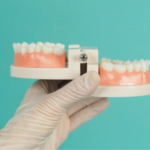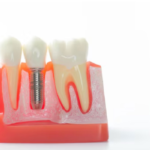Dental implants are a solid option for replacing lost teeth, but not all implants are created equal. The two main types are basal implants and conventional implants, and they vary in how they’re made and where they’re placed.
Bone Grafting Requirement
Conventional implants often need bone grafts if the bone isn’t strong enough or too thin. This can make the process longer, pricier, and involves extra healing time. Basal implants usually don’t need grafting because they use the sturdy basal bone, even if there’s some bone loss.
Bone Support and Placement
The biggest difference is where the implant is rooted. Conventional implants go into the softer part of the jawbone called the alveolar bone. This area can shrink over time, especially when a tooth has been missing for a while. In contrast, basal implants are anchored deeper into the stronger basal bone, which tends to hold its shape better.
Design and Technique
The way basal implants are designed is different too. They are typically one-piece and slimmer, while conventional implants come in two parts. This difference also affects how they are inserted: basal implants use a simpler, less invasive method, whereas conventional ones might need more complicated surgery.
Healing Time and Loading
With traditional implants, you usually have to wait a few months for the site to heal before adding a crown or bridge, which can take 3 to 6 months. Basal implants can often support a new tooth within 72 hours, giving patients quicker results and a faster turnaround.
Suitability and Use Cases
Basal implants work well for those with low bone density, smokers, or people with diabetes who may struggle with conventional implants. Traditional implants are a go-to for those with enough bone and no rush for results.
Conclusion
Deciding between basal and conventional implants depends on factors like bone health, urgency, and overall health. Both types can be effective, but it’s important to get a proper check-up from a dental professional to find the best option for you.







